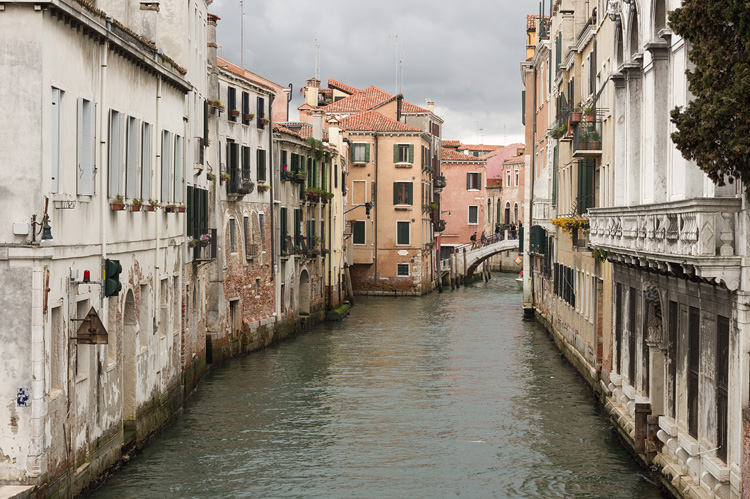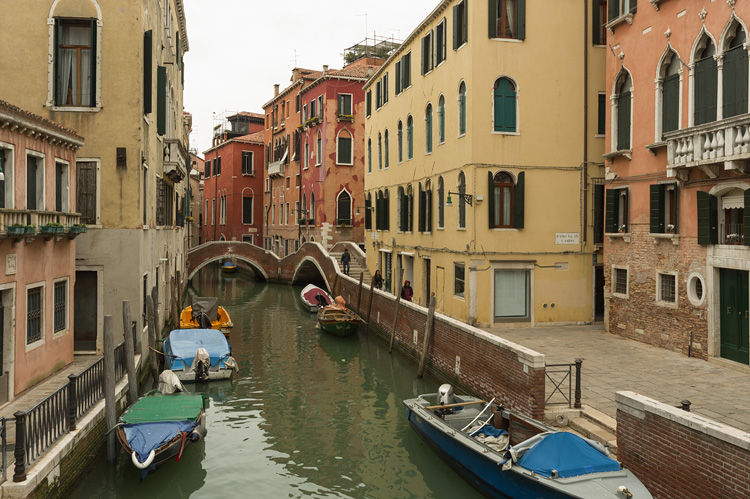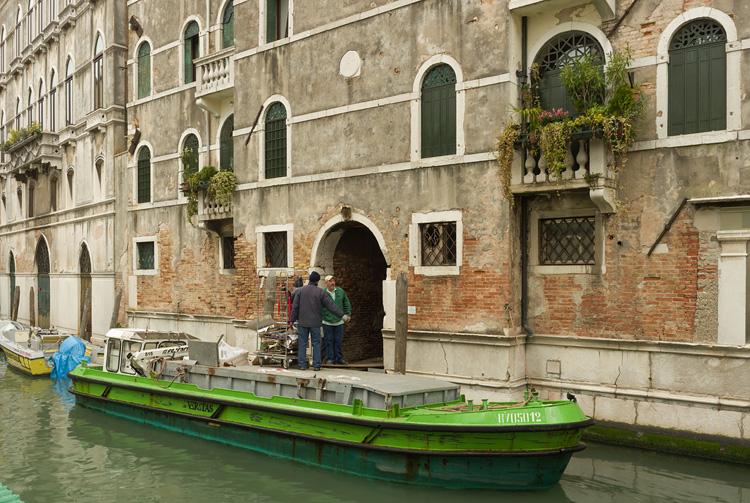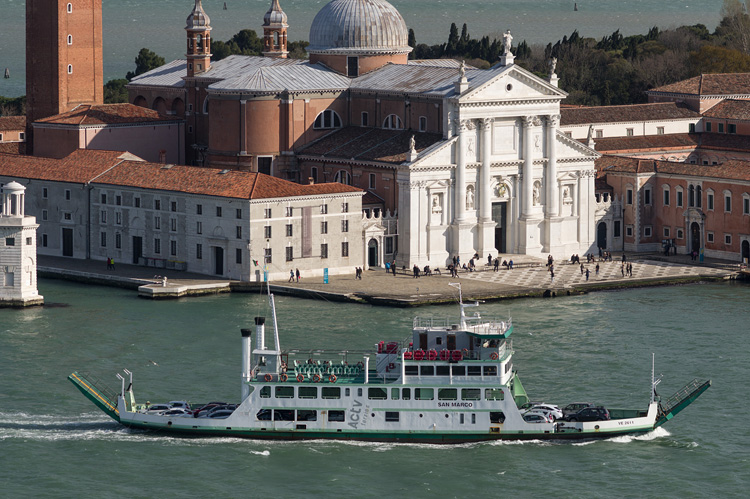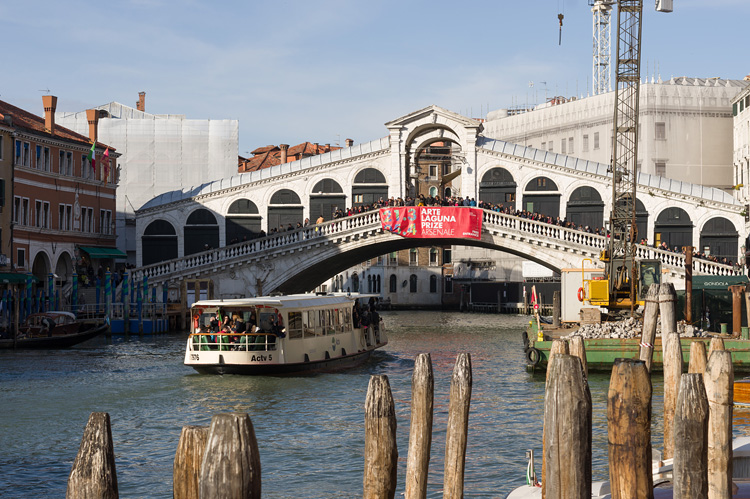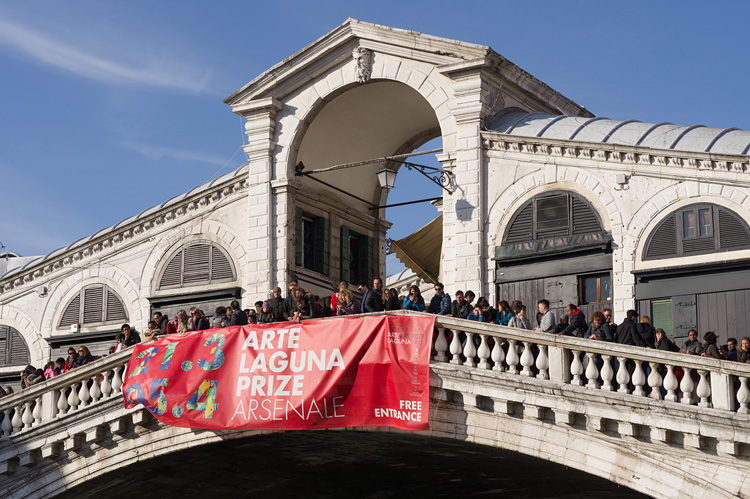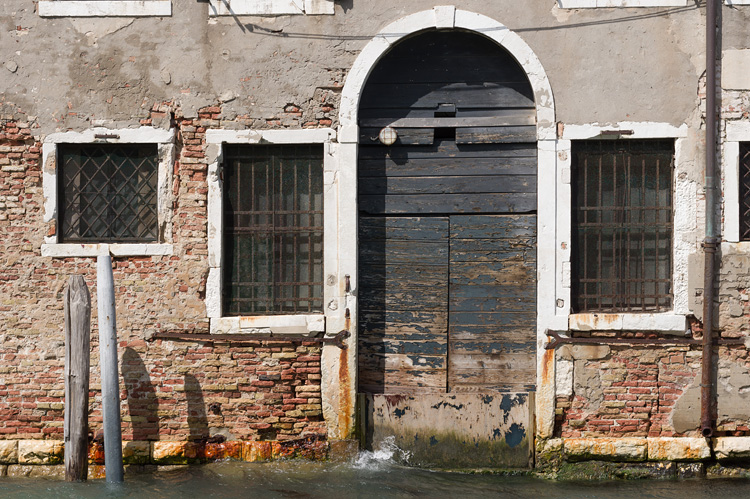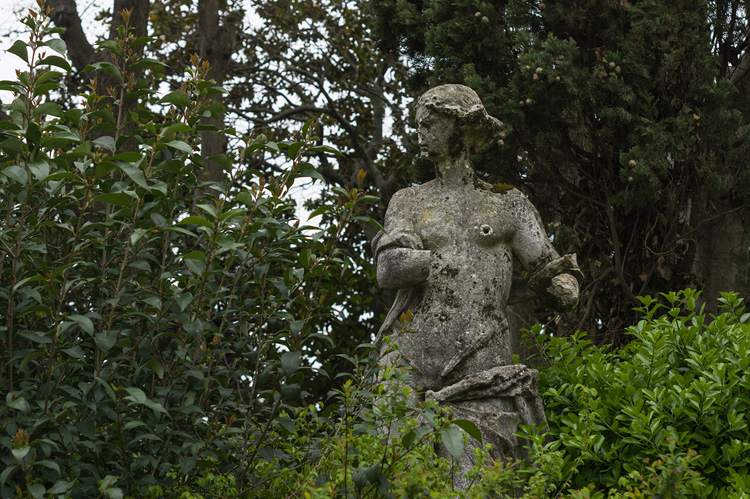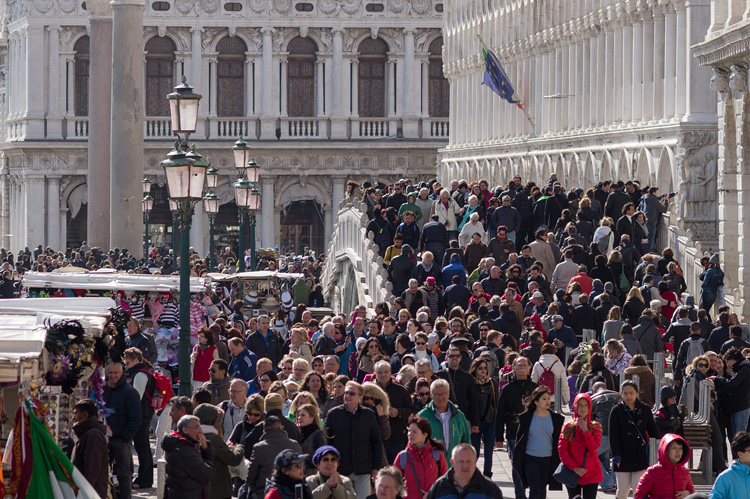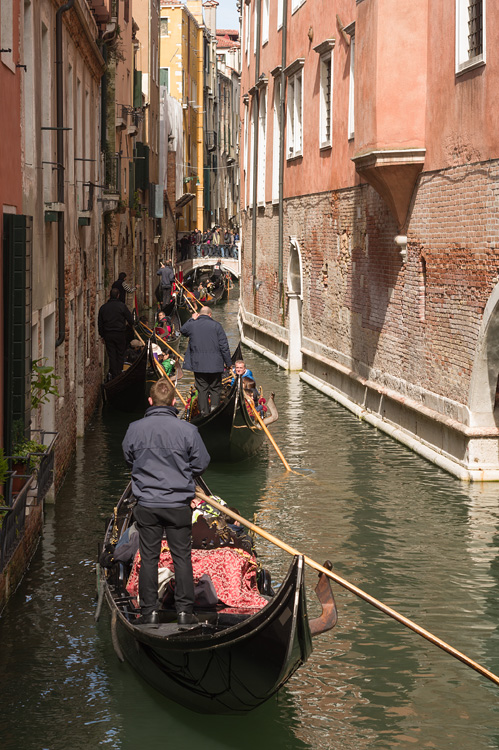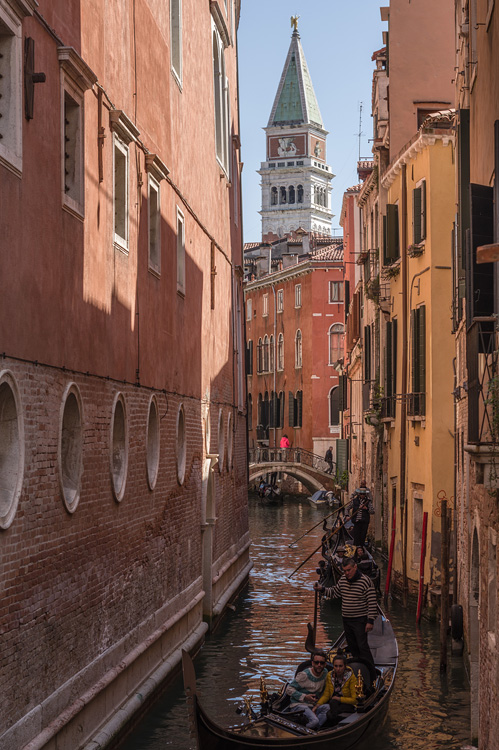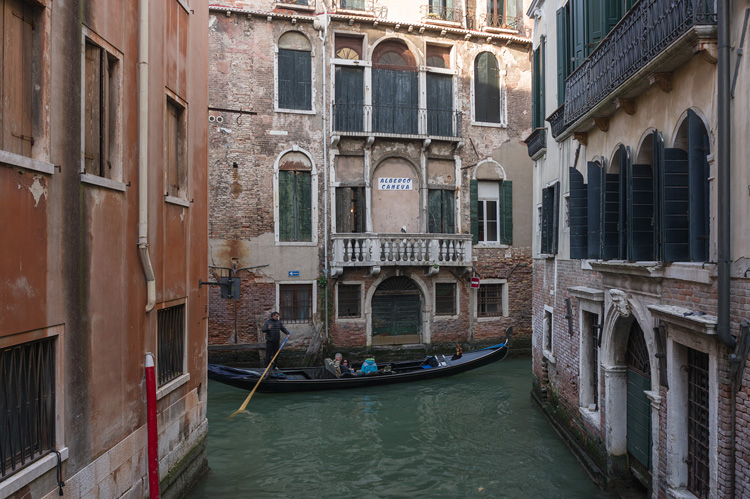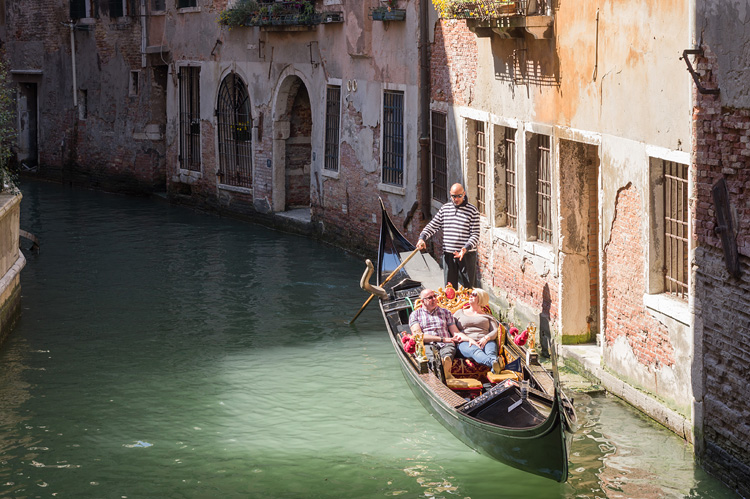Venice
Canals
Where there are streets in other cities, Venice features canals, which makes it a unique place.
Transportation
Anything, buses, city services such as garbage collection or even ambulances, has to use canals and the surrounding waters. Sure, people can also walk along the canals and cross them over countless bridges.
Main StreetOne big waterway cuts through town, the Canale Grande. |
Main Street explainedThe Canale Grande, the big canal, is used for fast transportation, for passenger line boats that operate like a city bus.
|
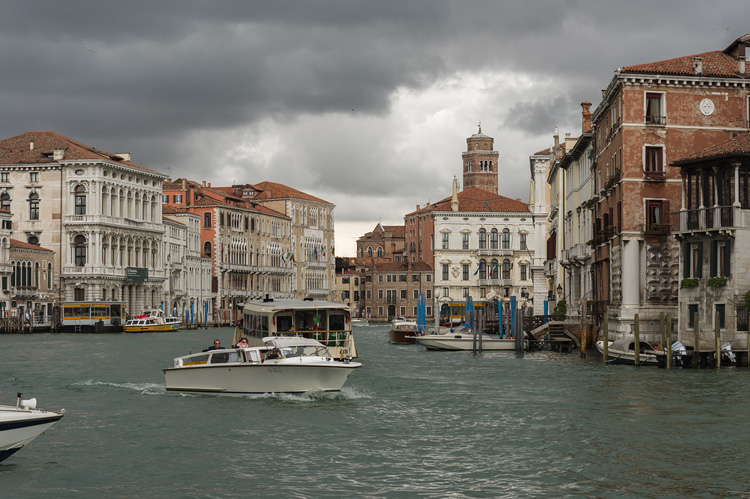
|
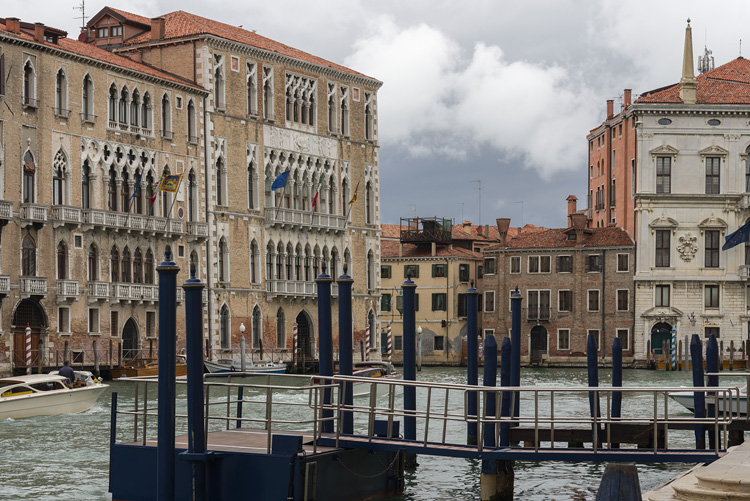
|
Canale GrandeThe broad canal in all its beauty. Private landings have been more important than sidewalks in many places. |
CrossingIt takes bigger bridges to span over the Canale Grande, the most famous among them is Rialto bridge.
|
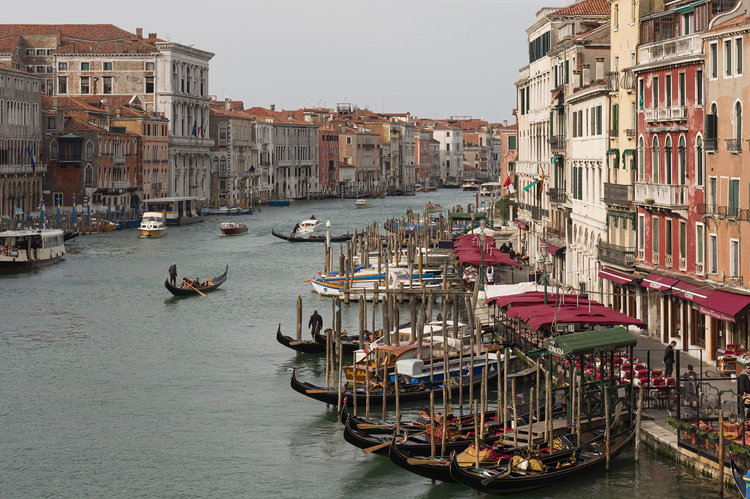
|
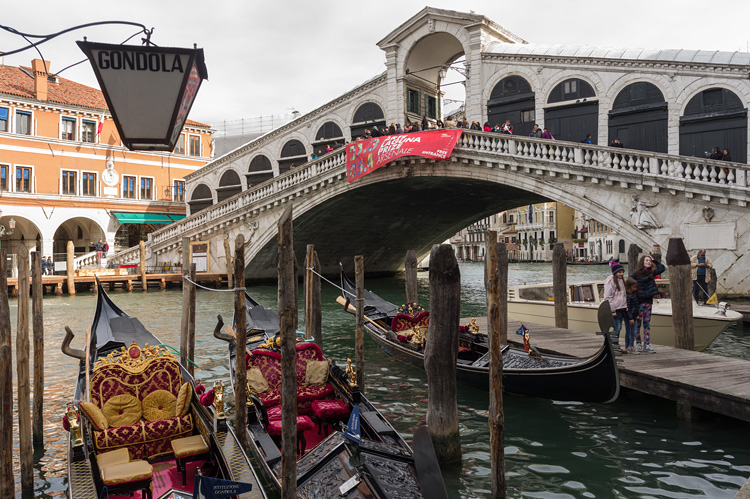
|
Rialto Bridge
A line boat passes under the bridge, while a crowd of tourists is watching from above.
Doge's PalaceThe north-side of the courtyard, and at the same time the backside of the San Marco basilica. |
Rio dei GreciThe tower belongs to the church San Giorgio dei Greci. Built in 1592, and since then standing on the soft ground, which may serve as an excuse for its tilting tendency.
|
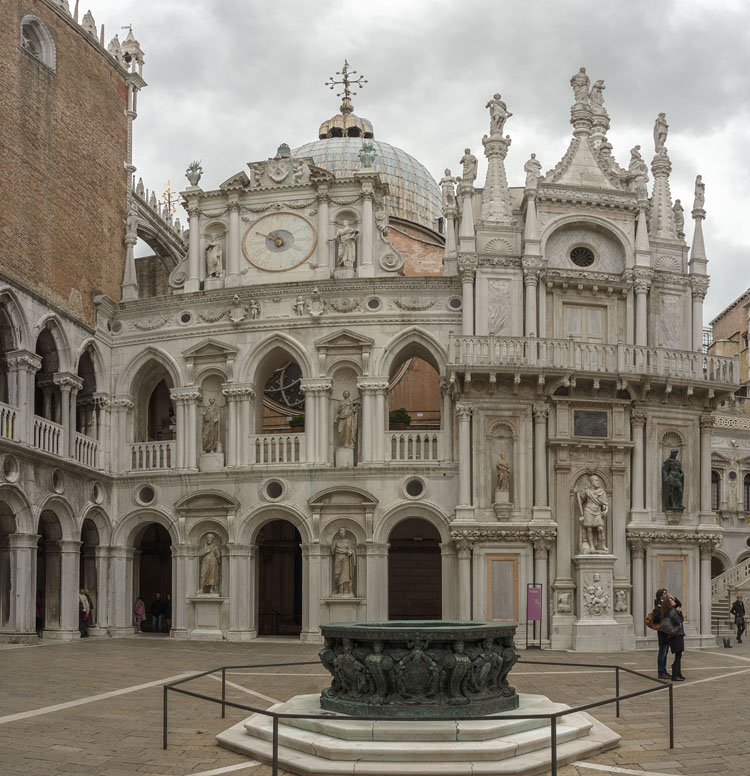
|
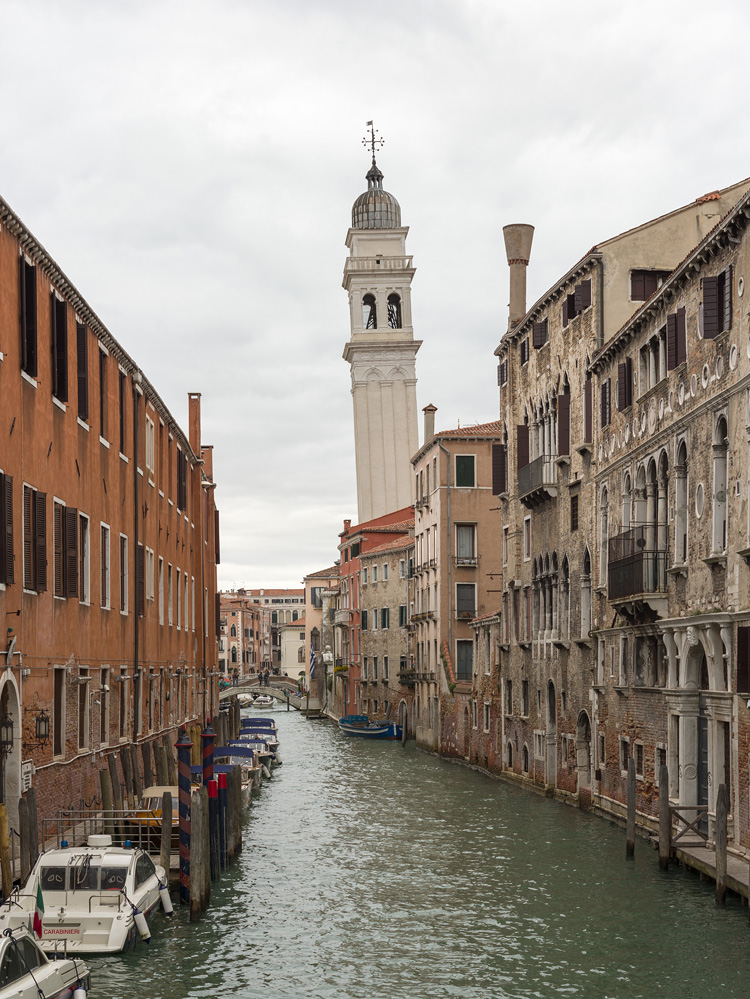
|
Doge's PalaceThe interior of the palace has its style. |
Bridge of SighsA bridge built in 1614 links the palace with a prison. No need to explain the name of the bridge.
|

|
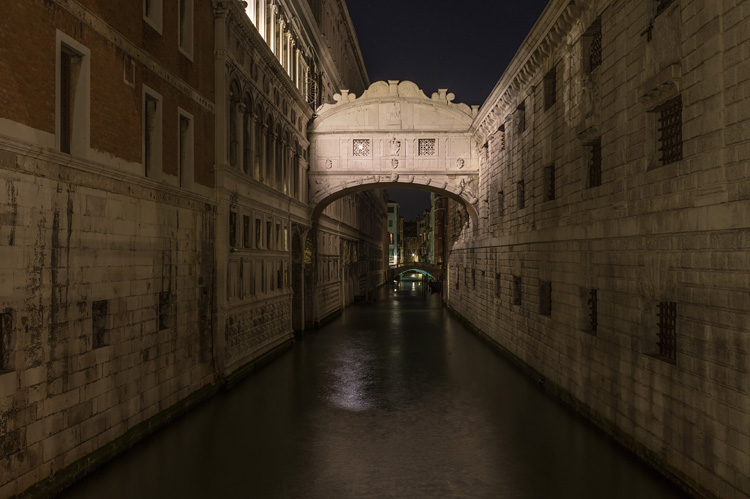
|
Decay
Many buildings in Venice are in need of repair, but this is also part of the city's charm. Age and repeated flooding created an original look.
LionFrom a facade in Fondamento Mendicanti. |
StatueBartolomeo Colleoni (ca. 1400-1475), an Italian general, now on Campo Santi Giovanni e Paolo.
|
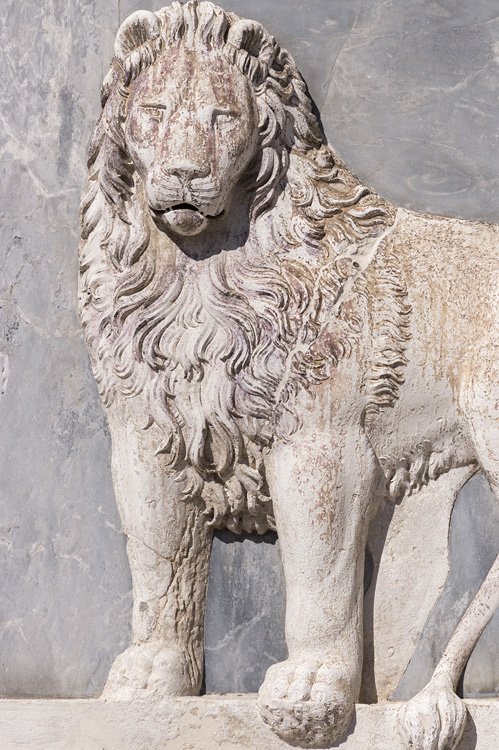
|
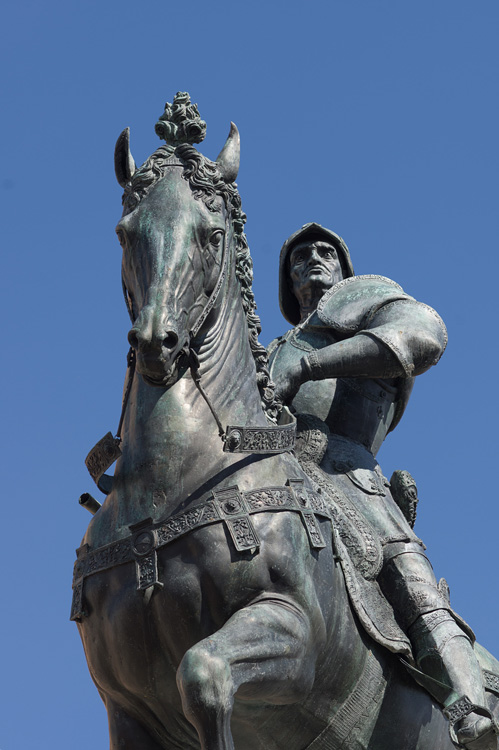
|
Bell-towerThe tower of San Marco basilica stands alone, and luckily so. Again and again hit by lightning over the centuries with subsequent fires, it finally collapsed in 1902 and was rebuilt in 1911. |
BasilicaThe front entrance of the church San Marco, seen from the base of the bell-tower.
|
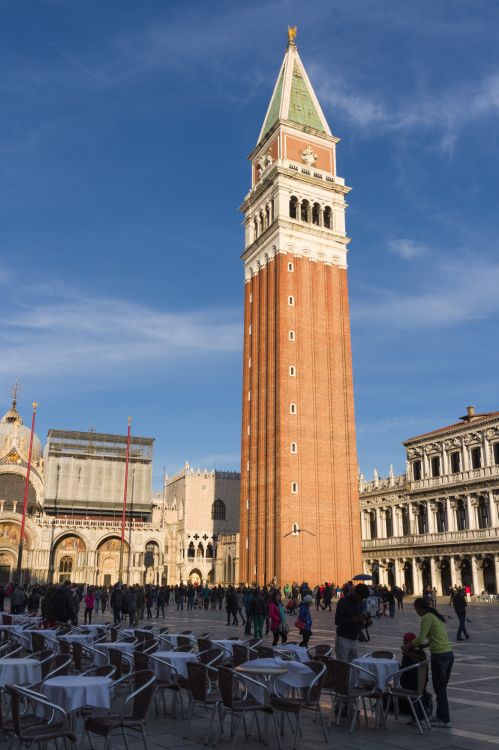
|
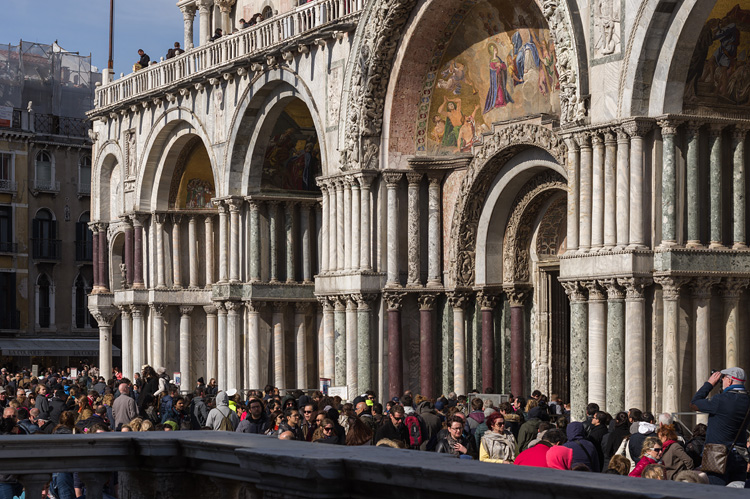
|
From the bell-tower
Left is San Giorgio Maggiore with the church of the same name. On the right a part of the island Giudecca.

From the belltower
The view goes south-east, towards the sea.

BoatsWooden moorings on the northeastern side of the city. |
AlpsAlso from the bell-tower, the view to the north illustrates the proximity of Venice to the Alps, with the airport Marco Polo also in sight.
|
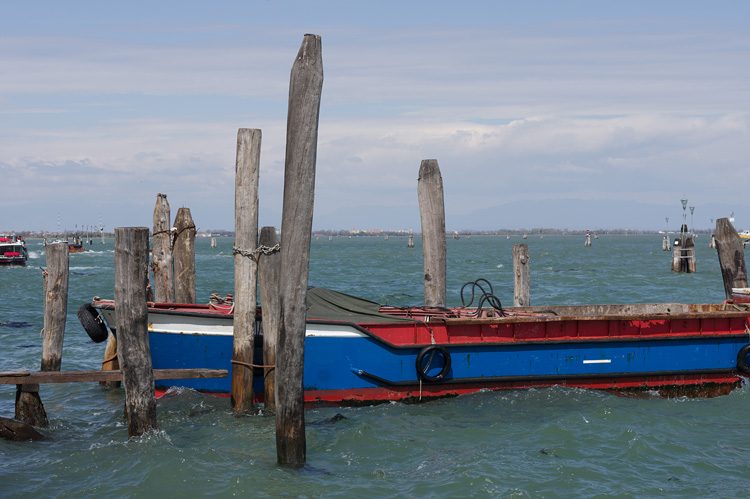
|

|
CemeteryThe square island San Michele hosts Venice's cemetery. The trees and water indicate a strong wind. |
LighthouseOn the island of Murano northeast of Venice, accessible by ferryboats. The island is famous for its glass factories.
|
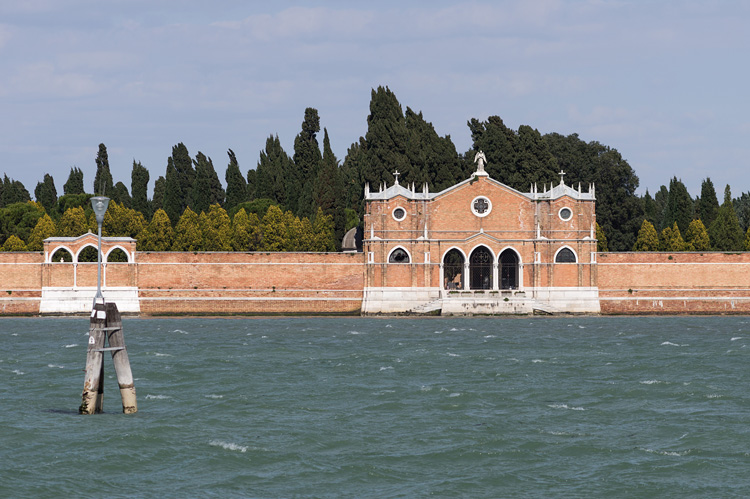
|
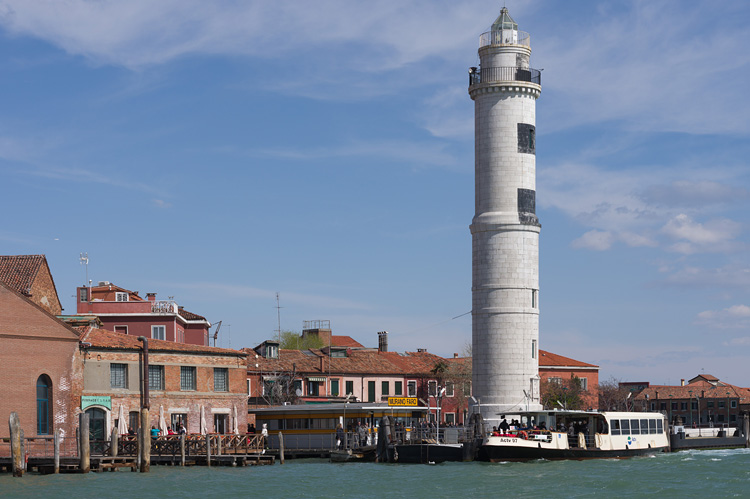
|
ArsenalThe entrance to the Arsenal, which built the ships used to spread Venetian power across the Mediterranean. |
Clock-towerThis torre dell'orologio stands on the island of Murano.
|
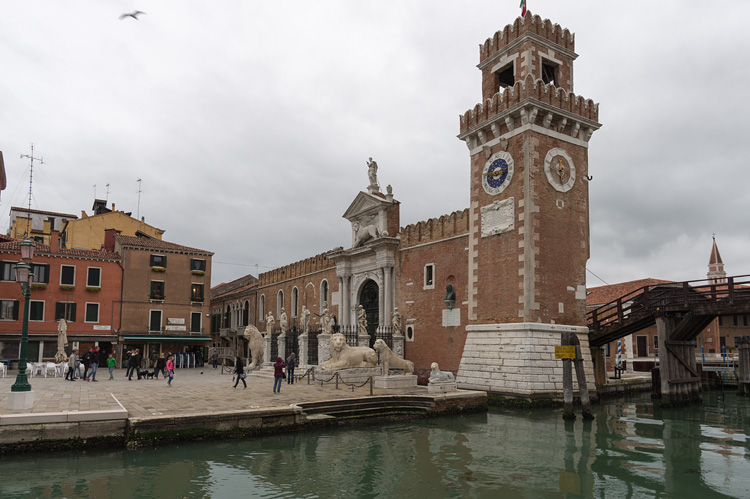
|
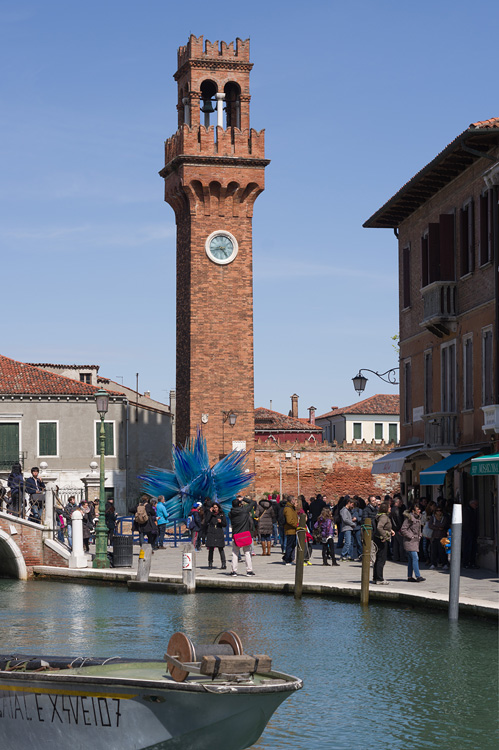
|
Tourism
Both a blessing and a nuisance, depending on perspective. The cruise ships are of impressive size, and their passengers join those who came by bus, plane, and crowd the main attractions.
Traffic jams
Stop and go is not limited to the automobile.
Gondolas
A gondola trip is a must during a visit to Venice, one might think. However, considering prices and speed, we trusted our feet.
BACK
